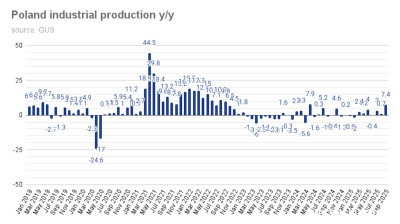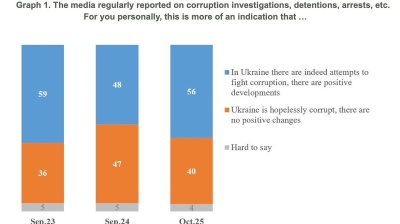The Romanian construction sector’s short-term metrics look particularly impressive, with double-digit annual growth rates frequently displayed — but the figures overestimate the actual value-added generated by the sector, while they partly reflect the rising price of construction materials.
The output of the construction industry in Romania, reflected by the construction works index, shows outstanding growth: +29% in January-September versus the same period of pre-Covid year 2019, and +16% y/y.
The growth rates were even higher in October and November, when they averaged +34% versus 2019 and +26% y/y, according to calculations based on the latest data released by the statistics office INS.
However, the value added generated by the construction sector was more modest: +11% versus 2019 and +10.9% y/y, in the first three quarters of the year. In other words, the value-added generated by the sector in January-September 2022 increased by 11% versus the same period of 2021 — when it was at roughly the same level as it was in 2019.
In fact, the bright construction works index readings were partly inflated by the prices of inputs, namely by the price of the construction materials: the construction materials price index (the price of the inputs for the construction industry) rose by 55% versus 2019 and by 34% y/y in January-September.
For comparison, the overall construction works prices (the price of the gross output generated by the construction sector) increased by only 33% versus 2019 and 20% y/y, for the same three-quarter period. These are high growth rates, still slower compared to the surge seen in the price of construction materials — which thus account for an increasingly important share of the total value of the construction gross output. This trend has accelerated recently due to rising energy prices, but to some extent will prevail in the long term as the energy prices are unlikely to return to pre-COVID levels.
The increase in the overall construction works index, which reflects the volume of the gross output, is thus partly driven by the higher relative price of inputs — and to a lesser extent by the volume of activity of value-added generated.
Even so, the construction sector remains particularly robust, albeit its growth rates (in value-added terms) can not compare with those of high-growth industries. The value-added generated by IT&C surged by 43% in January-September versus 2019 and by 22% y/y. This is a quadruple growth compared to the 11% higher value-added generated by the construction sector in 2022 versus 2019.
At the same time, the total gross value added generated by Romania’s economy rose by only 10.5% in January-September versus the same period in 2019, at the same rate as the construction sector. Agriculture, financial services and even industry performed well below average.

Data

Chobani yoghurt king Hamdi Ulukaya becomes richest Turk
Knocks Murat Ulker into second place in Forbes ranking as his company's valuation leaps to $20bn.

Poland’s industrial production jumps 7.4% y/y in September
September saw an unexpectedly sharp increase in industrial production after the surprise gain of 0.7% y/y in August.
Ukrainian M&A market grows 22% despite war, driven by local investors
Two large acquisitions by agriculture holding MHP and mobile operator Kyivstar accounted for more than half of the total deal value.

Ukraine’s credibility crisis: corruption perception still haunts economic recovery
Despite an active reform narrative and growing international engagement, corruption remains the biggest drag on Ukraine’s economic credibility, according to a survey by the Kyiv International Institute of Sociology.




